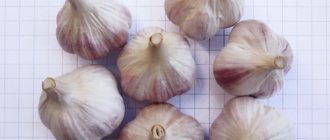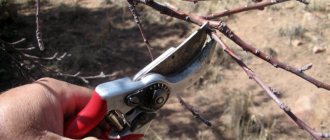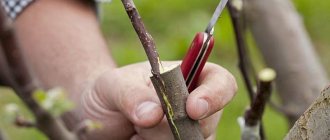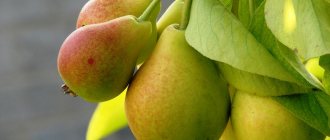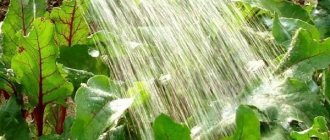Many people do not plant heirloom onions. The reason is that small bulbs grow. But if you know the agricultural technology of family onions, you can grow bulbs of 150g or more.
Onions are a widespread vegetable crop of the onion family. Onions can be small-germ (1-2), medium-germ (2-3) and multi-germ (4-5 or more). In common parlance, multiple bows are called family bows. Seven I - a lot.
Largest heirloom onion bulb
Shallots should also be included here. This is a type of multi-bud onion, but with a smaller bulb and tender leaves. I immediately notice that it is not feathers, but leaves. Birds have feathers, but plants only have leaves.
Due to its exquisite taste, shallots are considered a gourmet onion. These bows are often confused and called “all hands on deck.” Therefore, for convenience, we will call all these bows family.
Description and characteristics of the family bow
Family onion (lat. Allium ascalonicum) has been grown since ancient times. This variety of onion is considered the most delicious and productive . The plant has other names - kushchevka, magpie, kvochka.
The most popular variety is shallot, with small oblong bulbs of white or white-purple color, delicate taste and aroma.
Main characteristics of the culture:
- Family onions differ from ordinary onions in structure - a nest with 3-12 small heads is formed from one onion. In some cases their number reaches 20 pieces.
- Average weight - 15-60 g.
- The shape is varied: oblong, cuboid, pitcher-shaped, round, ovoid, elongated.
- The color of the scales is golden, red, purple, bronze.
- The center on the cut is white, pinkish-violet, reddish.
- The greenery is dense, the leaves are softer and thinner than those of a turnip, with a slight waxy coating. Feathers can be cut or pulled out with the bulb 2-3 weeks after planting. They do not become rough and remain tender throughout the season.
- The height of the ground part is 30-50 cm.
- The taste is semi-sharp and does not leave a sharp aftertaste or bad breath.
- The heads ripen in 50-80 days depending on the variety.
In the photo you can see what a family bow looks like.
Trimming onions before planting
Small ones should not be cut off before planting, but this cannot be avoided with large ones - otherwise the crop will take longer to germinate. It is also important to prune bulbs with dry bottoms - they slowly produce roots, and pruning will speed up this process. In addition, this can be achieved:
- rapid development due to intensive oxygen supply;
- good appearance of both the bulb itself and its feathers;
- eliminating bacteria.
It is also believed that pruning before planting, along with soaking it, contributes to longer storage of the crop.
Features of growing in open ground
Family onions are frost-resistant and not susceptible to bolting , so planting is carried out starting from the second ten days of April, subject to favorable weather conditions.
Long daylight hours and active snow melting are the best period for plant growth and development . The bulbs are literally saturated with melt water. Suitable air temperature is +18…+20°C. Seeds germinate quickly in soil heated to +4°C.
To obtain a large harvest, choose bulbs larger than 3 cm.
To prevent the spread of onion fly in the area, rows of onions are alternated with rows of carrots.
When growing heirloom onions, it is not recommended to apply fresh manure , otherwise you will get thick and tall greens instead of large bulbs.
To get large heads, it is important not to thicken the plantings and control their number in the bed. To do this, the earth is raked and excess specimens are twisted out. They can be used for food. The remaining bulbs get enough space to grow and develop.
In the greenhouse
Planting material less than 2 cm in size is used to force early greenery into heifers . Planting is carried out in January, taking into account the long dormant period characteristic of the plant.
Planting scheme
Growing heirloom onions requires a clear planting pattern. This vegetable crop must be grown in rows. Since the nests with bulbs are compact, the distance between the rows should be 20 cm. But the distance between the holes in the same row is 10 cm. Using a hoe, form furrows of the length you need, fill them with plenty of water. Let the water go away a little, and then start laying the onions at a shallow depth - lay them only 3 cm. If you plant them very deep, the onions will not give intensive growth of feathers, you will have very little greenery. If you plant very superficially, the plants will have weak roots. This means there will be a shortage of nutrients.
Wood ash can be sprinkled into each furrow on top of the bulbs. Water the holes again and cover with soil. There is no need to compact the soil; the soil on top must be mulched. Without this, the landing will not be correct. Shallots are very demanding of loose substrate.
How to mulch onions:
- Wood sawdust
- Senom
- Paper or cardboard crumbs
- Dry leaves
The best varieties of heirloom onions
When choosing a variety of heirloom onions, experienced gardeners recommend focusing on varieties adapted for cultivation in a particular region .
The table shows the main characteristics of the best varieties.
| Variety name | Form | Bulb weight, g | Coloring | Keeping quality | Productivity, kg/1 m² |
| Albik | Transverse elliptical | 10-20 | Husk - yellow, scales - white-green | 7 months | 1,5 |
| Veliky Ustyug | Round | 18-22 | Husk - brown-red, scales - white-violet | 7 months | 0,8 |
| Guarantee | Transverse elliptical | 15-25 | Husk - yellow, scales - white-green | 6 months | 1,7 |
| Knyazhich | Elliptical | 20-25 | Husk - red-brown, scales - purple | 7 months | 1,2 |
| Sturdy | Round | 25-30 | Husk - pink, scales - red | 6 months | 2,1 |
| Krasnoselsky | Transverse-narrow-elliptical | 40-50 | Red husks and scales | 8 months | 3 |
| Earring | Round | 20-25 | Husk - yellow, scales - white | 8 months | 1,5 |
| Sophocles | Round | 25-30 | Husk - brown-violet, scales - white-violet | 7 months | 2,2 |
| Old Believer | Elliptical | 15-18 | Husk - brown-red, scales - white-violet | 6 months | 1,2 |
Popular varieties
Popular varieties of heirloom onions include:
- Pesandor. It has a pleasant mild taste and purple color of juicy pulp. A varietal feature is a large number of primordia in the nest. It can reach up to 20 pieces.
- Monastic. Early ripening variety. Approximately 8 medium bulbs are formed in the nest. The taste is mildly pungent, the flesh is juicy, with a soft pink tint.
- Veliky Ustyug. A distinctive feature is large heads, pungent taste, bright aroma. The number of heads in the socket is up to 10.
- Old Believer. Another spicy family. The bulbs have an oblong shape, collected in nests of 8-10 pieces.
- Albik. This early-ripening variety is usually grown for feathers.
These varieties of heirloom onions are used for preparing first and second courses, cold appetizers, marinades, and also for canning. Due to their pleasant taste, they are excellent for fresh consumption, for example, in salads.
Correct fit
Heirloom onions are grown by seeds - to renew planting material, and by heads - to produce large bulbs and greens . Spring planting is carried out throughout Russia in April-May. In the south it is possible to plant onions before winter.
Preparing for landing
Under no circumstances should you refuse to prepare onions for planting - otherwise the size of the harvest may not be at all what was originally thought. But, since this is a rather unpretentious vegetable, it will be easy to cope with.
The first thing you need to start with is to soak the onion sets so that an underdeveloped fibrous root system begins to form. Usually a short time is enough for this, and this procedure is very useful. It allows you to:
- accelerate the emergence of seedlings;
- pre-treat the roots and the bulb itself from diseases and parasites;
- accelerate the development of the root system and make it more reliable for planting in the ground.
Thanks to soaking, the onion set takes root well in the ground and grows quickly.
Planting dates in regions
Timely sowing is the key to successful growth and development of the plant, the formation of a nest with a large number of bulbs . Considering the cold resistance of family onions, in most regions of Russia they begin planting in the second ten days of April. Greens tolerate frosts down to –7°C.
In the south, spring planting is carried out in early April, winter planting - at the end of October.
In the Urals and Siberia, the dates are slightly shifted. Planting of family onions is carried out taking into account weather conditions - in late April-early May. Pre-winter planting is rarely carried out due to the risk of losing more than half of the crop. If warm weather persists longer, heirloom onions are planted before winter in November, covering the beds with a thick layer of mulch (about 10 cm).
Shallot from seeds
Reproducing onions from seeds is quite difficult - this requires serious preparatory work. But if you have good selection skills, it’s still worth a try.
Preparing the bed
Shallots are sown in the spring, but the soil is prepared in advance - in the fall. To do this, the land is cleared of weeds, dug up and fertilized with organic and mineral fertilizers. Humus or compost is suitable, which is added at the rate of 5 kg per 1 sq.m., as well as superphosphate - 70 g per 1 sq.m. After fertilizing, you need to form beds and leave them until spring. Before sowing, the soil needs to be loosened a little.
Seed preparation
In order for heirloom onion seeds to germinate better, they should be germinated: wrapped in gauze or a cloth, placed in a container of water and kept for 2 days at a temperature of 22-25°C. Every 6-8 hours, the seed must be washed under running water, and then immersed again in a container with clean water. Before planting, the onion seeds need to be air-dried a little.
Sowing shallots
Shallot seeds are sown in late April - early May in beds prepared in the fall and covered with soil. The seeds are sown in furrows about 3 cm deep. It is advisable to cover them on top with a layer of peat or rotted compost. At first, the beds with shallots should be watered frequently.
Harvesting
In 20-25 days it will be possible to harvest the first harvest of greenery. In the first year, the seeds produce a medium-sized bulb, which, after drying, breaks up into 5-6 small ones. The next year, these bulbs are planted again in the garden to obtain larger nests of shallots. These bulbs will be suitable for such propagation for 5 years. After this, the planting material must be updated.
According to the lunar calendar
To obtain large bulbs, planting is carried out on the waning moon , to force greenery - on the growing one.
Favorable days for forcing greenery according to the lunar calendar for 2022:
- April: 2-7, 24-29;
- May: 1-6, 23-29.
Favorable days for receiving heads according to the lunar calendar for 2022:
- April: 9-14, 16-22;
- May: 8-13, 15-21.
There is an opinion that it is better to complete the planting of family onions before May 5th. Popularly it is Luke's day, or Lukov's day.
Growing by seedlings
The seedling method of growing family onions eliminates the problem of thinning the soil and protecting the sprouts from rain.
Sowing onions for seedlings begins with standard processing of the seed. Then the bulbs are planted in a wooden box and watered abundantly. Cover with polyethylene and wait for germination.
The temperature should be from 14 to 25 degrees, the soil should be moistened periodically. It is recommended to feed the seedlings once with chicken droppings diluted with water (1 to 10).
You can replant into open ground after the weather returns to normal. The seedlings are ready in 1-1.5 months.
Transfer:
- Water the soil in the box generously, dig up and pull out the bulbs, trim the roots (leave 4 cm).
- Prepare a hole in open ground and fill it with slurry.
- Plant the seedlings, dig in, water well, mulch.
- After 3 days, loosen the soil.
Additionally, we invite you to read about planting onions on greens in open ground in the spring. You will learn how and when to plant turnips. And also, how to grow greens at home on the windowsill at any time of the year.
Preparation of planting material
Medium sized seeds are best for planting . They form an average number of large bulbs. Large seeds produce a large number of small specimens.
The bulbs are cleaned of scales to reduce the risk of infection by fungi and disinfected in a solution of potassium permanganate, salt (50 g per 2 liters of water), and the drug “Maxim”.
Then they are washed with clean water and soaked in nutrient solutions (optional) :
- 50 mg of boric acid per 1 liter of water;
- 1-2 g of succinic acid per 1 liter of water;
- 1 g of potassium bromide per 1 liter of water.
Before planting, the material is dried in the open air.
The seeds from the bag are pre-soaked in water for 48 hours , changing it periodically. Then the material is dried until it flows and is sown in furrows at intervals of 8-10 cm. The width between the grooves is 15 cm. 2-4 small bulbs are formed from one seed. This makes it possible to grow family onion sets, which can be used for planting next season.
If there is not enough material to fill the prepared area , planting is done in halves or quarters. For large bulbs with a diameter of 3 cm and weighing 30-50 g, cut off the dry scales and the bottom to the roots. The bottom is covered by a hard part, popularly called the “heel,” which must be carefully cut off. This stimulates the appearance of roots.
The prepared material is soaked overnight in water at room temperature , and before planting, it is divided into two or four parts with a sharp knife along the bulb.
Note! The roots of heirloom onions are located unevenly on the bottom, so when cutting, make sure that approximately the same number of roots remain on each part.
Site preparation
To grow family onions, allocate areas on the south side of the garden , well heated by the sun, without drafts. The soil should be loose and nutritious. Acidic and clogged soil is not suitable for onions.
The best crop predecessors are pumpkin, squash, zucchini, legumes, potatoes, rye, flax, and lupine. The plant is replanted in the same place no earlier than after 3 years.
If necessary, increase soil fertility by plowing and adding up to 5 kg of humus per 1 m², 200 g of wood ash, 40-50 g of superphosphate.
Heavy clay soil is loosened using river sand - 5 g per 1 m².
The soil temperature during planting should not be lower than +5°C.
Landing instructions
A bed is formed on the site and 2-3 deep furrows are made . Planting material is laid out in a checkerboard pattern. A distance of 25-30 cm is left between large bulbs, 15-20 cm between medium-sized bulbs. If the task is to force greens, the interval between seeds is 10-15 cm.
Planting depth is 5-8 cm , the top is sprinkled with a 3 cm layer of soil for better rooting. When planted shallowly, the root system dries quickly and does not develop.
Small bulbs with a diameter of 1-2 cm are left for winter planting in October . Before the onset of frost, the planting material will take root and overwinter without negative consequences. In early spring, you can cut young greens or leave the onion on the head.
Watering
Until shoots 8-10 cm high appear above the soil, family onions do not need care at all. Even when watering. It is very important not to water the plant during the first period of growth. This will stimulate the roots to grow deeper. In search of moisture, the onion will take root well and gain a foothold in the ground. Long roots will allow it in the future to receive more nutrients from the deeper layers of the substrate.
When the onion has reached its 10-centimeter height, on the contrary, you need to start intensive watering and under no circumstances allow the soil in the beds to dry out. If plants experience drought, their growing season will be shortened sharply. The bulbs will be underdeveloped.
1 month before the planned harvest, you need to update the mulch layer, water it abundantly and stop watering completely. The moisture that the mulch retains will be enough for the onions.
Further care
Rules for caring for heirloom onion plantings:
- Abundant watering at the beginning of the growing season. Lack of moisture leads to the end of the growing season; the bulbs will not be able to grow to the desired size. Watering rate is 200 liters per bed. Three weeks before harvest, watering is stopped.
- To retain moisture in the soil, the beds are mulched with sawdust , straw, dry leaves or peat. This coating inhibits the growth of weeds and reduces the amount of weeding.
- In beds intended for producing large heads, greens are not cut . If you want to use a green feather for cooking, the ground is raked off and the head is carefully unscrewed from the middle of the nest.
- At the beginning of July, the nests are unearthed - part of the soil along with the mulch is raked away, leaving the heads ½ in the open air for drying and rapid maturation.
- If the previous crops were not fed , an additional 10 g of urea, 40-50 g of superphosphate and wood ash are added.
Disease and pest control
Family onions are less likely than other turnip varieties to suffer from fungal diseases and are subject to attacks by onion flies.
Sometimes there is wilting and yellowing of the greenery . The culprit of such changes is aphids. To destroy the pest, use infusions based on hot pepper (chop 2-3 pods and pour 1 liter of water), yarrow (300 g of dry raw material, pour 5 liters of water) or wormwood (0.5 g of herb, pour 10 liters of water). 25-30 g of liquid or 50 g of laundry soap shavings are mixed into the liquid for better adhesion of the solutions to the leaves. The biological product "Verticillin" is highly effective.
To repel onion flies, fresh branches of wormwood, tansy and yarrow are laid out on the beds. Once every 7 days, the above-ground part is watered with saline solution (200 g of salt per 10 liters of water).
If the rules of agricultural technology are violated, family onions are affected by powdery mildew, downy mildew, and neck rot. Infected plants are removed from the beds, healthy ones are treated with Quadris, Mikosan, and Pentophage.
Preventive measures:
- disinfection of planting material with “Maxim” and “Fitosporin” preparations;
- crop rotation;
- weeding.
The onion nematode bends the bottom of the bulbs . Infected planting material infects healthy plants. For prevention, before planting, the bulbs are treated with a 4% Formalin solution.
Diseases and pests
Heirloom onions have the same diseases and pests as onions, but most varieties are very disease-resistant, sometimes only fusarium occurs. It is favored by excess moisture at the end of the growing season. First, the bulb rots from below, then the rot moves higher. One of the preventive measures is mandatory disinfection of planting material. You should immediately stop watering, pull out the infected plants and water them in their place with a 1% solution of copper sulfate. In case of mass infection, use copper oxychloride.
With fusarium, rotting begins from the bottom
The most important pest to watch out for is the onion fly and onion moth.
The onion fly looks little different from the house fly
The larvae of the onion fly gnaw both leaves and bulbs at the beginning of summer. Carrots planted nearby reliably drive away flies. Dusting the soil with ash and tobacco dust also helps. If things go too far, Iskra or Inta-Vir are used. Onion moths are fought in the same way.
Onion moth looks like a miniature butterfly
Try proven medications for onion flies:

